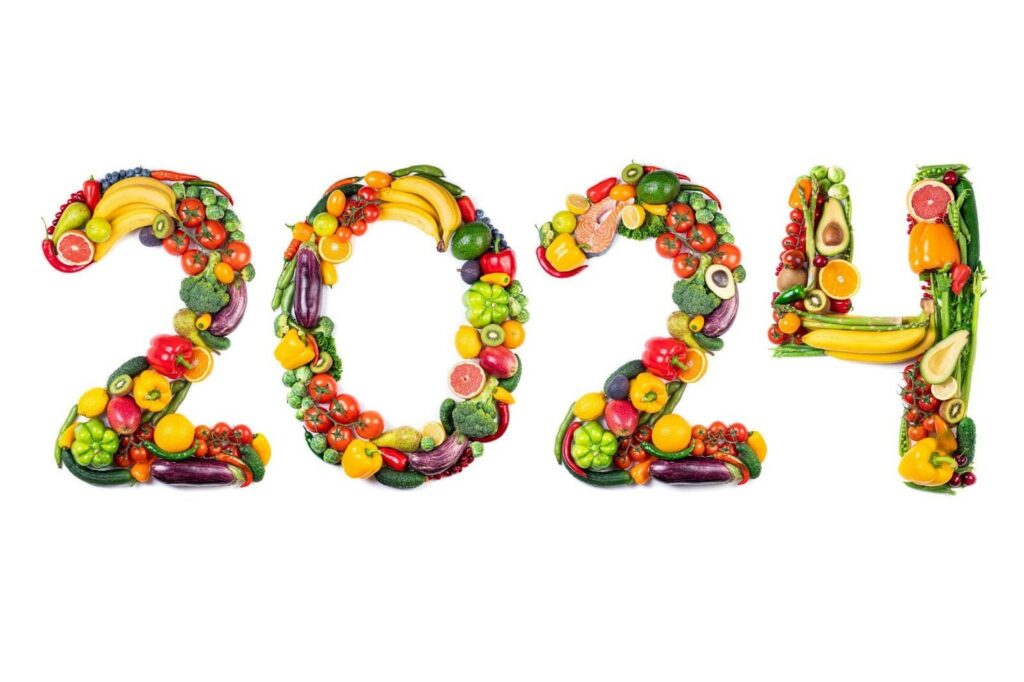Just like fashion, the food and beverage industry is all about trends. Just as denim is a timeless trend, certain foods are always popular. Let’s face it: Some food and beverage trends vanish as quickly as they emerge. However, restaurant owners and food brands must keep up. Recent years have changed how people eat and think about food.
So, what’s sticking around and what’s new on the table? In this article, we’ll look at the top food & beverage trends for 2024, giving you a peek into what consumers want.
Let’s get started!
Top 8 Global Food and Beverage Trends in 2024

Check out the top food and beverage trends from industry research. These trends will continue to challenge, disrupt, and entice producers and consumers.
- Spotlight on the Drinks Segment
Do you know about the research on the global ‘Soft Drinks Market‘ in 2024? It’s been on a steady rise recently, and experts predict this trend will continue strong until at least 2032.
Beverages are totally in the spotlight right now, showcasing emerging trends that are set to satisfy consumer preferences and jazz up our cocktail game this year.
The State of the Specialty Food Industry report by SFA highlights the recent trend of beverage sales surpassing food sales, credited to ongoing innovative developments in the sector.
Looking ahead, there is a predicted surge in demand for sophisticated single-serve beverages, encompassing both fizzy and non-fizzy variants. Additionally, functional coffees, teas, and broths infused with ingredients providing extra energy, focus, clarity, or relaxation are poised for increased popularity.
Plus, these drinks will keep things healthy with minimal to no added sugar, salt, or artificial ingredients. The beverage industry is all ready for an exciting journey characterized by flavor innovation and wellness-oriented choices.
- Plant-Derived Foods
According to PBFA, 70% of all US citizens eat plant-based foods, up from 66% in 2022. Plant-based foods were consumed by 60% of households in 2022 & had an 80% repeat purchase rate across all categories.
Unlike a couple of decades ago, when vegan options were limited, today’s menus offer diverse plant-based choices due to growing awareness about animal welfare and environmental concerns.
The reason behind people choosing more plant-based diets is not just ethical. Plant-based diets offer more health benefits and reduce carbon footprint. Investors are eyeing plant-based foods due to allergies, economics, and a desire for social change, making them a promising investment.
As plant-based diets capture more attention, they promise a healthier and more sustainable way of eating for both individuals and the planet.
- Products Promoting Wellness
We live in an era where everything is personalized, from emails to recommendations and offers based on our browsing and purchase history to targeted advertisements on social media or websites.
But when it comes to health and wellness, there’s no such thing as a one-size-fits-all diet. Nowadays, people want foods and drinks that offer specific health benefits and can actually make a positive impact on their health and well-being.
For example, there’s been a buzz around DIY immunity-boosting shots with ginger and turmeric to homemade probiotic-rich kombucha for gut health, DIY protein balls for post-workout recovery, and guilt-free dark chocolate avocado mousse for a healthy dessert option.
This trend reflects a growing interest in personalized nutrition and wellness, prompting more brands to develop products that cater to individual dietary preferences, health needs, and lifestyle choices. These products range from plant-based and gluten-free options to functional beverages targeting energy, focus, and relaxation.
According to the Grand View Research report, the global functional foods market is expected to expand at an 8.5% compound annual growth rate (CAGR) from 2022 to 2030.
- The Evolving Fast- Casual Food Trend
The global fast casual food industry is projected to reach $337.8 billion by 2032.
With busy schedules and the need for convenience, people are turning to quick and easy dining options. With the rise of food delivery services and more people hopping online, the market seems to be gearing up for major growth.
Fast-casual restaurants have become a new buzz nowadays as they prefer cooking fresh and healthy meals right on the spot. They also continuously change their menus and offer their customers several options to customize their food.
Getting late? Fast-casual restaurants are on their way to provide you with a meal on time. Plus, they offer different accompaniments. For example, if you reach a restaurant on a hot summer day, they recommend a refreshing iced tea to go with your meal.
- Growth in “Little Treat Culture”
You all know that feeling when a little treat just brightens up your day? It’s like a mini happiness boost that can turn a rough day around or make a good day even better. Thanks to TikTok and creators all around, treating ourselves has become a huge thing, and we are fully embracing it.
Treating yourself isn’t just about indulging; it’s also a great incentive to tackle those everyday tasks. Who doesn’t feel a little more motivated to complete their workout session when there’s a reward waiting at the end? Those little joys, like treating yourself to a delicious dessert after a long day at work, add some extra sparkle to life.
Brands are totally embracing this treat culture, too! They’re introducing affordable and convenient single-serving delights that bring happiness without hurting your wallets.
- Single-Dish Restaurants
Single-dish restaurants or one-dish wonders haven’t lost their charm, whether it’s shawarma bars, hotpot joints, or spots like Burger and Lobster or The Meatball Shop. These places haven’t reached their peak yet.
These single-dish restaurants are soaring in popularity because they excel at focusing on one thing and doing it exceptionally well. They’ve found their niche in the food scene, providing unique offerings that stand out from the crowd.
What’s impressive is how they manage their ingredients smartly, ensuring that each dish is not only delicious but also contributes to their profitability.
For example, Xooro (California)
This fast-dessert chain, based in California, serves oversized gourmet-filled churros such as maple bacon, vanilla citrus, triple chocolate, and tiramisu, attracting fans from Los Angeles to Qatar.
- Self-Service Kiosk and Grab-and-Go Restaurants
Ever stepped into a fast-food joint and found yourself face-to-face with self-service kiosks? It’s like having a digital menu at your fingertips. You can place your order, swipe your card, and you are done. No waiting in the queue is required.
Kiosks are game-changers for the food and beverage industry. They speed up the process for customers and help restaurants easily take more orders.
Its also a win-win because the staff are freed of their duties of taking the orders and can focus more on providing the service, especially during the lunch rush.
Millennials and busy individuals prefer these services as they get healthy options without spending much of their time. Grab-and-go options allow restaurants to experiment with fresh concepts and enhance their delivery or takeaway services.
How Technology Affects the Food and Beverage Industry?

Technology has completely transformed how we look at food today, bringing about some significant changes in the industry.
- Improved Efficiency
Thanks to technology, farming and packing food are now much smoother and more streamlined.
- Shopping Trends Have Shifted
With new grocery shopping apps emerging every day, buying groceries has never seemed much easier than before.
- Going Green and Staying Healthy
Businesses are now more focused on food safety and healthier options. They also use technology to track their impact on the overall environment.
- Keeping Food Safe
Thanks to technological advancements, food safety is rapidly changing. Technology assists businesses in monitoring food safety regulations and removing expired or contaminated food items.
- Being Eco-Friendly
Businesses are now more tilted towards accepting eco-friendly practices like solar power or other energy-efficient equipment.
- Keeping It Transparent
Technology facilitates businesses to trace where the ingredients of their food come from. Thus making it easier for them to track that the ingredients are organically grown and sustainable.
- Better Customer Experiences
Whether its midnight cravings or that sudden craving for pizza, online food services have made it more convenient to get the food as and when needed.
For example, you can get pizza in 30 minutes or free. This rapid service helps make our food experiences smoother and more enjoyable.
These small changes are making a big difference in this emerging industry. Technological advancements make the future more exciting and full of surprises.
Moving forward, let’s explore the latest trends in the global food and drink market.
Let’s Conclude
Today everyone is on the quest for that perfect healthy bite. Even though people are boarding the health train, they still have a soft spot for small guilty pleasure bites. Businesses must accept and adapt to these trends to stay ahead of the competition.
LeanSummits serves as your secret weapon, helping you decode emerging trends and stay ahead in this constantly evolving sector.



